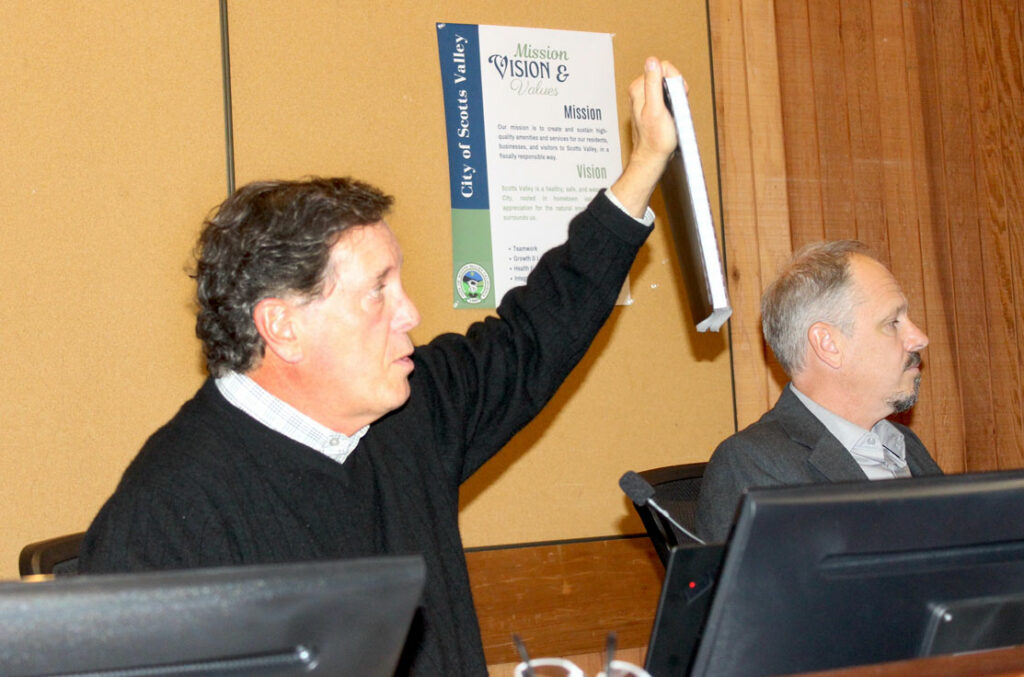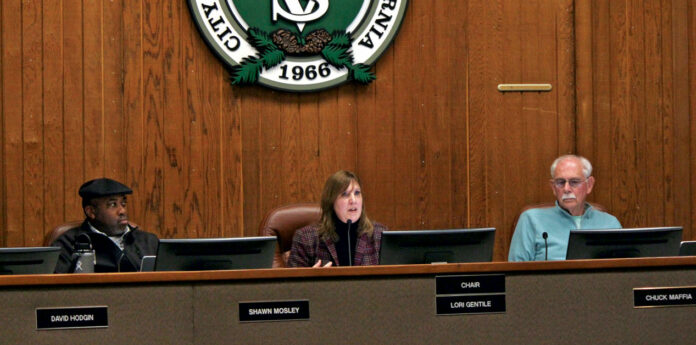The last time Scotts Valley got a new General Plan, Pete Wilson was California’s governor and Seagate Technology—which was still based in the community—hadn’t even expanded overseas.
Back in 1994, when the last one was adopted, city leaders were predicting a major boom in population and jobs, but in the ensuing years that growth spurt didn’t materialize as-expected.
That General Plan predicted the mostly sunny enclave would attract 16,000 people and 12,000 jobs, whereas business departures and the failure of the first set of Town Center plans, among other factors, have left Scotts Valley with a population of 11,600 and just 6,700 jobs.
Interestingly, the Association of Monterey Bay Area Governments’ projections don’t even match what the General Plan predicted.
On Nov. 16—more than six years after it held a community workshop to gather feedback on what residents want Scotts Valley to become—the City debuted the Draft General Plan at a Planning Commission meeting.
It wasn’t as ambitious as neighboring municipality Los Gatos’ recently approved General Plan—as that one featured a slew of initiatives meant to encourage plant-based diets, an optional “Racial, Social and Environmental Justice” chapter, and a section focused squarely on granular design characteristics of the community.
But for Scotts Valley, its Draft represents a major step forward from the prior incarnation.
“I think some of it was written on a typewriter,” said Bill Wiseman, a representative of consultant Kimley Horn, about the one that’s in place now. “Essentially, it’s a community vision document.”
The Mobility Element of the Draft General Plan points out that 79% of Scotts Valley residents drive as a solo vehicle occupant (versus working at home, carpooling, taking the bus, biking or walking) compared with 75% of Capitola residents, 70% of Watsonville residents and 57% of Santa Cruz residents. And, it continues a shift toward investments in transit and pedestrian infrastructure.
Whereas Los Gatos has been studying the Vehicle Miles Traveled (VMT) system for reducing greenhouse gas emissions for around four years now, this was the first time that Scotts Valley Planning Commissioners were getting their head around the program—and some seemed to be having a hard time with it.
The Draft General Plan still relies largely on the “Level of Service” analysis, which assesses traffic impacts on local intersections and road segments.

Later in the evening, the Planning Commission recommended establishing a VMT policy.
Community Development Director Taylor Bateman said it’s odd that the State has one program (the Housing Element process) that encourages building homes in low-density areas like Scotts Valley, while the VMT metric lays out disincentives to constructing housing in parts of the city.
“It’s a situation where the State’s right hand isn’t really talking to its left hand,” he said. “This gives us another tool to analyze mobility options.”
Commissioner Steve Simonovich asked about the positives of moving in this direction.
“What are the positives of adopting this for Scotts Valley,” he said. “I’m not quite clear on the benefits.”
Bateman noted it’s the result of a State directive.
“We don’t have a choice,” he replied.
During the General Plan discussion, Wiseman said while, in some ways, the planning blueprint represents a huge reorganization, in other ways, little is changing.
“There’s been no changes to the land use map as part of this update,” he said. “That’s kind of fundamental.”
So, under the plan, other than what the City will be forced to do through the State-ordered Housing Element process that’s underway, there will be no additional rezoning.
“We’re not planning a major amount of growth,” Wiseman said. “The idea was to keep the land use map stable in its current form.”
Here’s the Vision Statement planners settled on: “Surrounded by hillsides and forests, Scotts Valley is an energetic City that values a mix of natural and built environments. The residents and business owners will always benefit from a balanced mix of housing, employment, and commercial and services, and foster community interaction that is the foundation of a family-oriented way of life.”
And here’s the first of 20 “Guiding Principles” listed in the Draft: “Preserve and enhance Scotts Valley’s safe, small-town character and natural wooded setting in balance with these other guiding principles.”
Chair Lori Gentile said it was fulfilling to participate in the development of the Draft.
“I remember the first time I came into it, I was really nervous,” she said, noting she wasn’t sure about what she could really contribute—though that feeling quickly subsided. “It was such a tremendous experience.”
Commissioner Shawn Mosley said it was nice to see so many local agencies had come together to work on the Draft General Plan, which the body voted unanimously to recommend.
No one spoke during public comment for either item.










